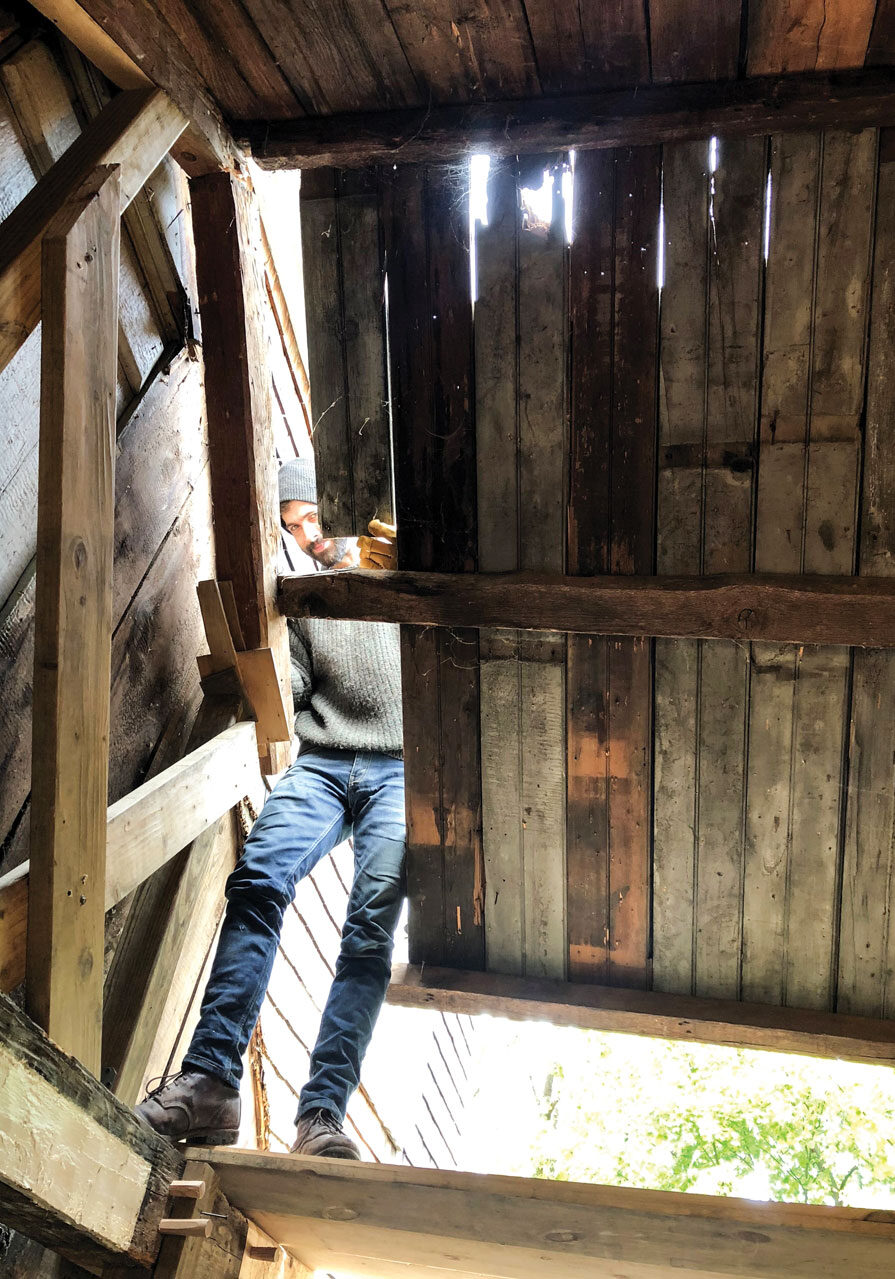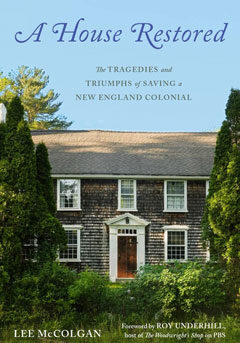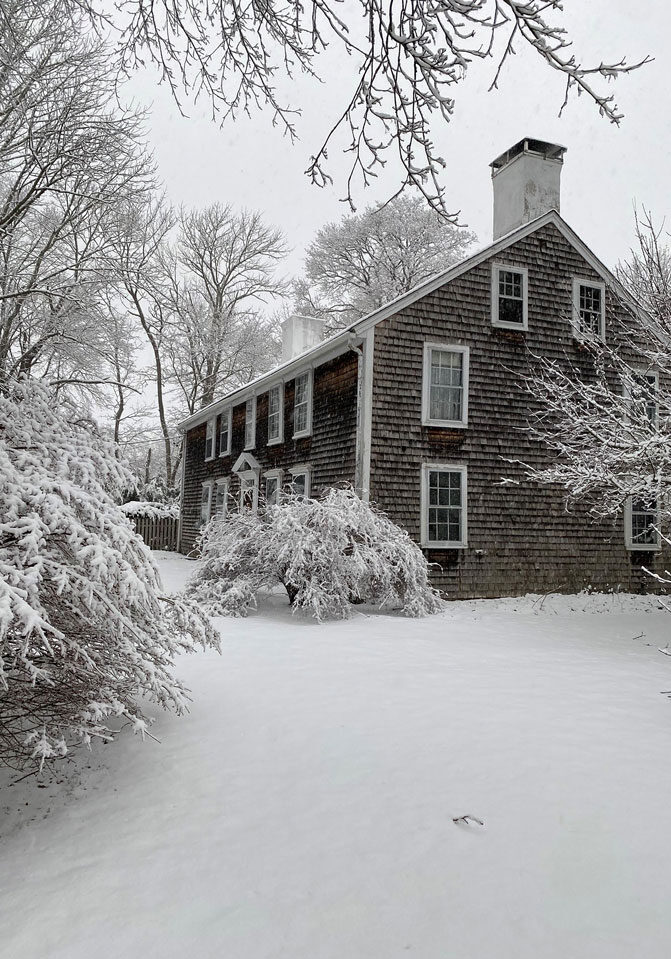Restoring an antique colonial – the old-fashioned way.
By Dave Kindy

In 2017, Lee McColgan laid eyes for the first time on the historic Loring House in Pembroke. Built in 1702, the structure was in dire need of a rescue effort and the former financial expert- turned-restoration enthusiast believed he was up for the challenge.
“What could go wrong?” McColgan remembered thinking as he and his wife Liz completed the purchase, thus beginning his odyssey to breathe new life into an antique home. While encountering the onerous obstacles that inevitably come with restoring an ancient building, he embarked on his own path to self-awareness – especially after deciding to do most of the work the way it was done 300 years ago.
“It was a spiritual journey for me,” McGolgan says. “I naively wanted to do this, not realizing what it would take, but I learned a lot about myself. As I discovered how difficult these skills were, I gained a greater appreciation of the effort involved – and what I was capable of.”
Of course, McColgan didn’t realize where all this would take them back then. “I had no idea that I’d just made a deal with the devil,” he writes in “A House Restored: The Tragedies and Triumphs of Saving a New England Colonial,” his recently published book about this sometimes unholy adventure.
McColgan soon got a taste of what he was in for when he pried open a wall in the kitchen and discovered the large wooden beam supporting that corner of the house was all but gone. To his horror, he realized that nature and time had left him with a major structural hazard.
Rather than fix it using modern methods, McColgan decided to do it the old-fashioned way: hand-hewing a huge timber with the same kind of tools used three centuries ago. While he brushed up on old skills by reading books, he was also ready for this work because of his career correction a few years earlier. After leaving the financial industry, he cut his teeth on antique restoration at Boston’s Old North Church, Louisa May Alcott’s Orchard House in Concord, and other historic buildings.
With the structural integrity of his house shored up, McColgan than tackled other imposing issues in the traditional style. For repairing windows with 300-year-old glass, he worked for months with a glazier in Nantucket to see how it was done in 1702. He also learned how to operate an iron forge so he could make replacement hinges for a built-in cabinet, as well as found out how to do masonry, plastering with horsehair and lime, and dozens of other long-forgotten construction techniques.



To top it all off, McColgan was working against a tight timeline to complete his quest: his wife wanted to have Thanksgiving at their restored colonial home. She asked if he could complete the work in time. “Of course, I can, no problem,” he innocently answered, and then blindly stumbled forward. The day before the big meal, he was rewiring the kitchen and shoring up sagging floor boards in the dining room.
In fascinating fashion, McColgan’s book captures the highs and lows of his resurrection pilgrimage. His lyrical narrative is immersing, entertaining and informative as he delves into the history of ancient building methods and details the process of learning how to use them again.
“I wanted to write a true preservation story,” the author says. “I’m not saying everyone needs to learn how to timber frame to restore a house. But that’s what I was drawn to and that’s the story I wanted to tell.”
Along the way, McColgan discovers that the journey was not just about repairing an antique home, but also about finding his own place in the cosmos.
“In understanding my house, I came to understand a little bit more about the world and myself,” he concludes.
